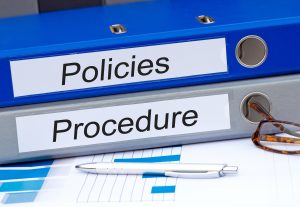As Solar Power International approached, travel was on my mind. Setting up travel plans led me to thinking about the day-to-day accounting of travel for solar contractors. Interestingly enough, travel has also come up with a majority of my Estimating as a Services (EaaS) customers lately. It appears folks are having a hard time figuring out how to determine travel costs and implement a policy that is more reflective of reality. So here are a few pointers on how to estimate your travel costs, how to figure out what they really are, and things to consider when developing a new policy.
A couple of moving parts go with any trip such as the number of people going to site, the distance, the number of trucks going to the site, traffic and tolls, and how many times the trip is made. It is important to keep all of these in mind when considering travel.

Determining your travel costs
How to Estimate your travel costs:
My strategy is remarkably simple. With my customers I talk through their travel policy, frequent crew size, and how many vehicles typically go to site each day for a project. I then use google maps to figure out the average travel time is at commute hours to the new site. Use that number for each direction times the number of people who are being paid to drive those trips. I also make sure I account for the number of tolls that are included on those trips. I have found that for the average truck and maintenance costs, that $0.60/mile is remarkably accurate. Finally, I take into account any travel incentives such as transit passes or gas stipends the company provides to their employees.

Determining your real travel costs
Determine what are your real travel costs:
This task brings us back to the wonderful world of job costing! The key to figuring out what your true costs are is either by tracking your costs or pay attention to what is really happening. Do a few case studies where you pay attention to the crew and how closely they are following the travel policy. Run through your data for a couple of projects to determine how many trips you had estimated they would need in terms of travel and then compare what it actually took. This is the simplest way to get to a per mile, per module travel cost. I might add, if you have numbers like the number of trips that were actually taken, now would be a great time for you to tune your own calculus on the number of trips you estimated to be taken. A more broad-stroke type of approach is to log the odometers on the vehicles in a year, apply a average miles-per-gallon, and determine the total spent on fuel in that period of time. Finally tally up the maintenance costs and presto, you have a cost-per-mile value for your vehicles.

Developing a new travel policy
Things to consider when developing a new policy:
If you are developing a travel policy you really need to pay attention to how everyone is getting to the site. A lot of companies have a policy placing to-site travel responsibility on the crew, which is pretty common in the construction industry. But when you are considering this it is important to take into consideration how often you travel outside the region that is reasonable for your crew to get to; Where does travel responsibility shift from crew to company. Pay attention to the incentives as loopholes will often be exploited if they inadvertently incentivize the crew. One common example of a loophole is loading the truck at the warehouse and then being paid for the travel-time to site. Though this is necessary sometimes, it is easy to see how such a loophole would be exploited when possible. Finally, the company’s capacity to provide transportation is important. Trucks are not cheap to maintain and drive so if additional vehicles are being used just to transport perhaps additional vehicles need to be purchased and the policy adapted.
Final Thoughts:
As long as you are relatively consistent and keep spot checking your travel costs, you will average out over the long run. Akin to most estimating, travel policies and behaviors are very “personal” things that require some good thinking. Let me know if you ever want to talk through some of the nuances or pitfalls I’ve seen.
